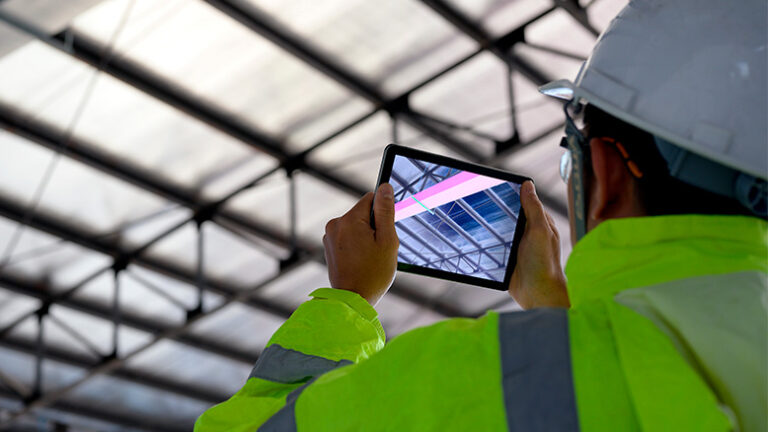— 5 min read
How to Use Tech to Keep Construction Clash-free


Last Updated Sep 23, 2025

Jacob Kunken
Solutions Engineer, Heavy Civil
28 articles
Jake Kunken currently works as Solutions Engineer for Procore's Heavy Civil division. He brings 14 years of experience working in various construction roles in New York and Colorado, including laborer, assistant carpenter, carpenter, assistant superintendent, superintendent, construction manager, safety manager, and project manager. Jake also spent time in EHS as an environmental engineer for Skanska. He’s worked on more than 40 commercial projects from ground-up, to heavy civil, hospital work, and tenant improvement. Jake studied Ecological Technology Design at the University of Maryland.

Diane McCormick
Writer
49 articles
Diane McCormick is a freelance journalist covering construction, packaging, manufacturing, natural gas distribution, and waste oil recycling. A proud resident of Harrisburg, PA, Diane is well-versed in several types of digital and print media. Recognized as one of the premier voices in her region, she was recognized as the Keystone Media Freelance Journalist of the Year in 2022 and again in 2023.
Last Updated Sep 23, 2025

Construction professionals are leveraging technology to make clash detection work smarter, not harder. With cloud-based platforms and sophisticated software, they are not only spotting clashes —they're averting and resolving them before they happen.
In this preventive, proactive environment, construction leaders will soon allow AI to craft solutions without human intervention, for higher orders of risk mitigation and operational efficiencies.
Table of contents
Charting a Clash-free Course
In traditional clash detection, general contractors and subcontractors convene to compare drawings. When the 11-inch plenum can’t accommodate a 12-inch vent, they make changes.
Person-to-person dialog remains essential to clash detection, but the traditional process consumes time and can miss key details. Every time an undetected clash appears or reiterates on paper, it creeps closer to forcing rework on the jobsite.
A growing body of technology tools is now detecting and resolving more clashes during preconstruction. Beyond simple identification, they include coordination-issues tools for building information modeling (BIM) platforms that drive resolution by incorporating the full project team, connecting with requests for information (RFIs) and change events, assigning responsibility and integrating with 3D modeling software.
As conflicts and coordination issues are resolved virtually, they integrate seamlessly into ongoing designs, for efficient adaptations, fewer reworks, and heightened safety.
Blending Tech and People: 3 Steps for Success
Technology for clash detection has not entirely removed humans from the equation — yet. Until that day, three steps help support an effective human-technology hybrid strategy that brings digital advantages to clash detection.
Lean on technology first.
Utilize technology to search for low-hanging fruit, such as that oversized vent. The software will save time by detecting the obvious clashes, teeing them up for timely resolution.
Follow up with human expertise.
Assign human eyes and expertise to comb through the plans, especially if the technology delivers suspiciously few clashes. With their experience and instincts, the pros can discern the subtler clashes that technology can miss.
Rethink existing clash-detection roles.
Keep rethinking old roles in clash detection. MEP tradespeople will continue detecting and resolving their own clashes as they materialize, but the power of AI to spot potential clashes is generating decision points earlier in preconstruction. At those junctures, engineers and architects have a responsibility to watch for clashes and contribute to solutions.
Key Construction Clash Detection Tools & Techniques
A range of tools and practices can help facilitate and maximize technology-enabled clash detection.
Common Data Environment (CDE)
CDEs create central, organized repositories for information retrieval, reporting and data-driven analytics. CDE platforms encode entries and direct them to the correct documents and files.
Using CDEs as their common ground, general contractors, project managers and specialty contractors can communicate over a single source of truth, confident that each piece of data informing their drawings and decisions is accurate and the latest entered.
Importantly, CDE enables the “federated model” that transforms scattered data points from varied stakeholders and file formats — all those .vdc, .pdf, and .jpeg extensions — into uniform entries for comprehensive BIM results.
Selective Tech Access
Multiple players need access to project-related data and 3D renderings. Stakeholders start with the general contractor and can include project managers, specialty contractors and superintendents.
However, every participant doesn’t necessarily need to see the full range of data compiled in the system. Sensitive material such as finances and personally identifiable information should be shielded from all but need-to-see eyes.
Typically, the general contractor and any IT administrators on the project establish permissions for those who can gain access to which information.
Historical Data
There’s no substitute for experience, especially as specialized structures such as healthcare facilities and data centers increasingly dominate the construction docket. Contractors steeped in hospital construction, for instance, can contribute to preconstruction by ensuring that medical gas lines meet required specs.
Now, technology is incorporating that level of historical data into preconstruction, for application to drawings as they develop. For streamlined compliance, software could someday apply local standards and regulations to projects, detecting conflicts between plans and government mandates.
AI for Scheduling
AI is developing the know-how to spot potential scheduling and timeline conflicts. It might alert users to a narrow window between the underground plumbing installation scheduled for a certain day but followed quickly — too quickly, perhaps — by the concrete pour.
AI could also overlay scheduling with weather reports, to ask if the scheduler wants to delay an installation when a storm is imminent.
Free AI in Construction Course with Hugh Seaton
Start learning today with industry expert Hugh Seaton and discover how AI can boost efficiency, reduce risk, and transform your projects.

Where Real and Virtual Worlds Meet
Virtual models and digital twins are merging with augmented reality for new levels of precision on job walks. It’s like getting as-builts in real time, as users with virtual reality tools consider how in-place structural elements will react with those that are pending, including MEP installations.
Plus, increasingly sophisticated 3D jobsite scans are capturing existing conditions, detecting potential clashes, and inputting real-time changes into BIM models — all for the trades to see before they arrive onsite. Laser scanning technology, when incorporated into coordination issues software, can alert users to tolerances that do not conform to BIM models, generating notes on issues requiring follow-up.
A drone [can] navigate around the job site and capture existing conditions, in-wall conditions, rough-ins, and more. You won't need me holding a tape measure and a colleague snapping a picture that says the plumbing is at 24 inches. The drone can fly through and say, ‘Don't drill here and here, because there's a water pipe at this elevation that’s running this length.’

Jacob Kunken
Solutions Engineer, Heavy Civil
Procore Technologies
Looking Ahead for Clash Detection
In short, technology for clash detection is entering every phase of construction, driving deeper understanding of existing and upcoming conditions and constraints.
Rework will be honed to minimums, and job progress will accelerate as people more efficiently utilize their skills to create the highest-quality, most cost-efficient structures possible.
Was this article helpful?
Thank you for your submission.
0%
0%
You voted that this article was . Was this a mistake? If so, change your vote
Scroll less, learn more about construction.
Subscribe to The Blueprint, Procore’s construction newsletter, to get content from industry experts delivered straight to your inbox.
By clicking this button, you agree to our Privacy Notice and Terms of Service.
Thank you!
You’re signed up to receive The Blueprint newsletter from Procore. You can unsubscribe at any time.
Categories:
Written by

Jacob Kunken
Solutions Engineer, Heavy Civil | Procore Technologies
28 articles
Jake Kunken currently works as Solutions Engineer for Procore's Heavy Civil division. He brings 14 years of experience working in various construction roles in New York and Colorado, including laborer, assistant carpenter, carpenter, assistant superintendent, superintendent, construction manager, safety manager, and project manager. Jake also spent time in EHS as an environmental engineer for Skanska. He’s worked on more than 40 commercial projects from ground-up, to heavy civil, hospital work, and tenant improvement. Jake studied Ecological Technology Design at the University of Maryland.
View profile
Diane McCormick
Writer | Procore Technologies
49 articles
Diane McCormick is a freelance journalist covering construction, packaging, manufacturing, natural gas distribution, and waste oil recycling. A proud resident of Harrisburg, PA, Diane is well-versed in several types of digital and print media. Recognized as one of the premier voices in her region, she was recognized as the Keystone Media Freelance Journalist of the Year in 2022 and again in 2023.
View profileExplore more helpful resources

How Are Partnerships in Construction Being Redefined?
In a market where cost, speed, and quality are table stakes, owners are demanding more than projects delivered on time and on budget. They want trusted partners who bring strategy,...

How Close Are We to Bridging the Design-Build Divide?
For decades, construction decisions have often been made based on gut instinct. But what if the real barrier to transformation isn’t technology—it’s the divide between design and construction? In episode...

Will AI Replace ‘Paperless Builders’—or Redefine Them?
How can artificial intelligence enhance rather than replace human expertise in construction? In Episode 16, Hamzah Shanbari, Director of Innovation at Haskell and author of “The Paperless Builders,” reveals how...

Building Intelligence: How AI & Data Are Rewiring Construction for the Digital Age
As data center construction surges to meet the demands of AI, cloud computing, weekend streaming binges and real-time digital services, the pressure being put on builders by owners has reached...
Free Tools
Calculators
Use our calculators to estimate the cost of construction materials for your next project.
Templates
Find a template to help you with your construction project tasks.
Material Price Tracker
Get the latest U.S. retail prices and view historical trends for common building materials.
Glossary
Explore key terms and phrases used in the industry.
